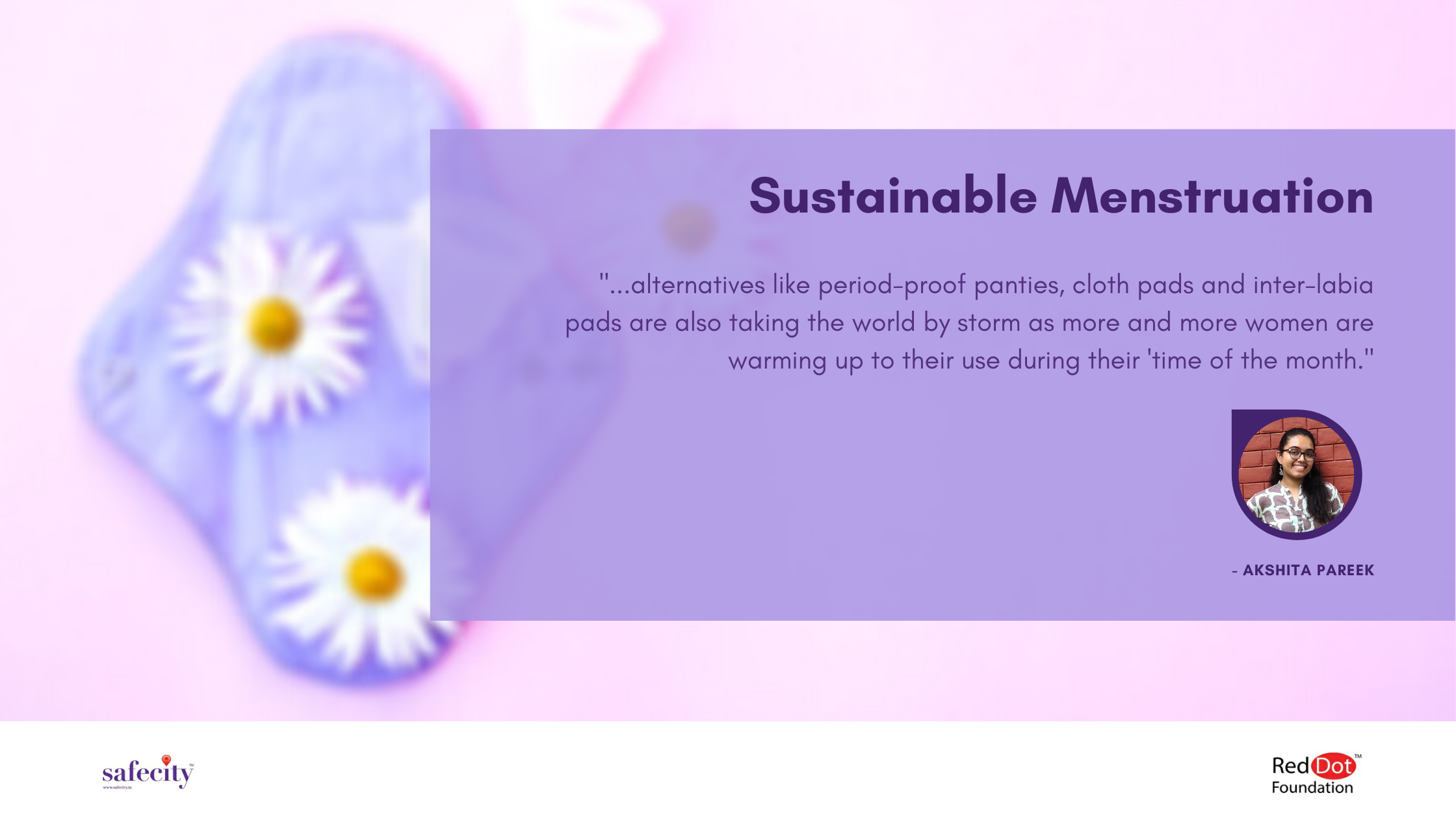Sustainable Menstruation

Akshita is a nineteen-year-old overachiever and perfectionist with big dreams, trying to wade through her entangled teenage years. An extrovert, dog lover, and travel enthusiast who finds her ultimate home in the poems she can create at any given time of the day.
SUSTAINABLE MENSTRUATION
every month, when my uterus destroys its own walls
to swear allegiance to my ovaries,
I am torn between grieving
the agony of my cramps
and
the fatality of plastic periods.
An estimated 423 million sanitary napkins containing plastics are generated in India annually and have a strong potential to cover landfills spread over 24 hectares alone. The menstrual pads are made up of 90% plastic, right from the leak-proof base and synthetics that soak up the fluid to the packaging. Since all of this plastic adds up once it is disposed of, it takes about 500-800 years for a single pad to get decomposed. Most of these sanitary pads end up in landfills, with their chemicals leaching the soil. or are incinerated, thus contributing to land and air pollution more than ever. A lot of women flush the pads after use which has led to them becoming of the biggest causes of clogged drains in the world. Additionally, there is little clarity on whether pads should be classified under bio-medical waste or dry waste and the Indian waste workers are typically ill-equipped to handle it. All these hazards have led to the development of the narrative of sustainable menstruation.
Sustainable Menstruation refers to the practices where environmentally friendly alternatives to conventional menstrual products are used. This advocates the use of reusable products like menstrual cups, cloth pads, period panties and inter-labia pads to reduce the waste created by non-biodegradable materials present in sanitary pads. Young college-goers and working professionals, after dwelling on the environmental costs of sanitary pads and tampons, are starting to embrace more reusable options. Apart from the environmental concerns, going sustainable is also economically efficient with a positive cost-benefit analysis as the menstrual cups and other reusable options require one-time investment and last for much longer as compared to the pads. In this regard, menstrual cups deserve a special mention. They have been steadily emerging as precursors of the sustainable mensuration movement owing to their reusability and cost-efficiency. These silicon or rubber cups are extremely flexible, collect the period blood instead of absorbing it like the pads and tampons and can be used for 6-12 hours straight. They can last up to 10 years, don’t contribute to the landfills like pads & are precisely a onetime investment saving women from period hassles, rashes, skin infection, leakage, etc. While they are gaining popularity among the young, it is still difficult to swing the set notions of menstrual hygiene of the other women. A lot of young girls are deterred from using it owing to the cultural taboo of virginity. It is also a relatively new concept in India so many women aren’t comfortable with using it. The fuss around emptying the cup acts as another restraint for its use.
Some other sound alternatives like period-proof panties, cloth pads and inter-labia pads are also taking the world by storm as more and more women are warming up to their use during their ‘time of the month’. A lot of brands advocating for sustainable menstruation through their products have sprung up recently. Most of them choose to leverage technology through e-commerce websites and WhatsApp group curations. These brands have been successful in spearheading a sustainable mensuration movement by bridging the information gap between suppliers and users in the market, apart from highlighting the need for shifting to more sustainable practices. It is important to understand the significant, applaudable and positive impact that gets created on the planet through a transition from disposable to sustainable menstrual products, and here, the contribution of each woman counts.
REFERENCES:
- https://www.greenthered.in/
- https://www.tuftsgloballeadership.org/blog/sustainable-menstruation-india-%E2%80%9Cgreening-red%E2%80%9D-rashi-rathi-f%E2%80%9918
- https://medium.com/one-future/sustainable-menstruation-the-environmental-impact-of-menstrual-products-eba30e095cda
The views expressed are that of the writer.
